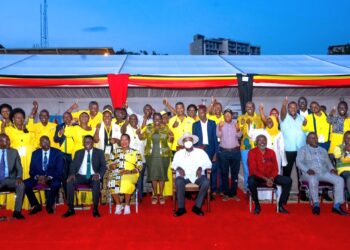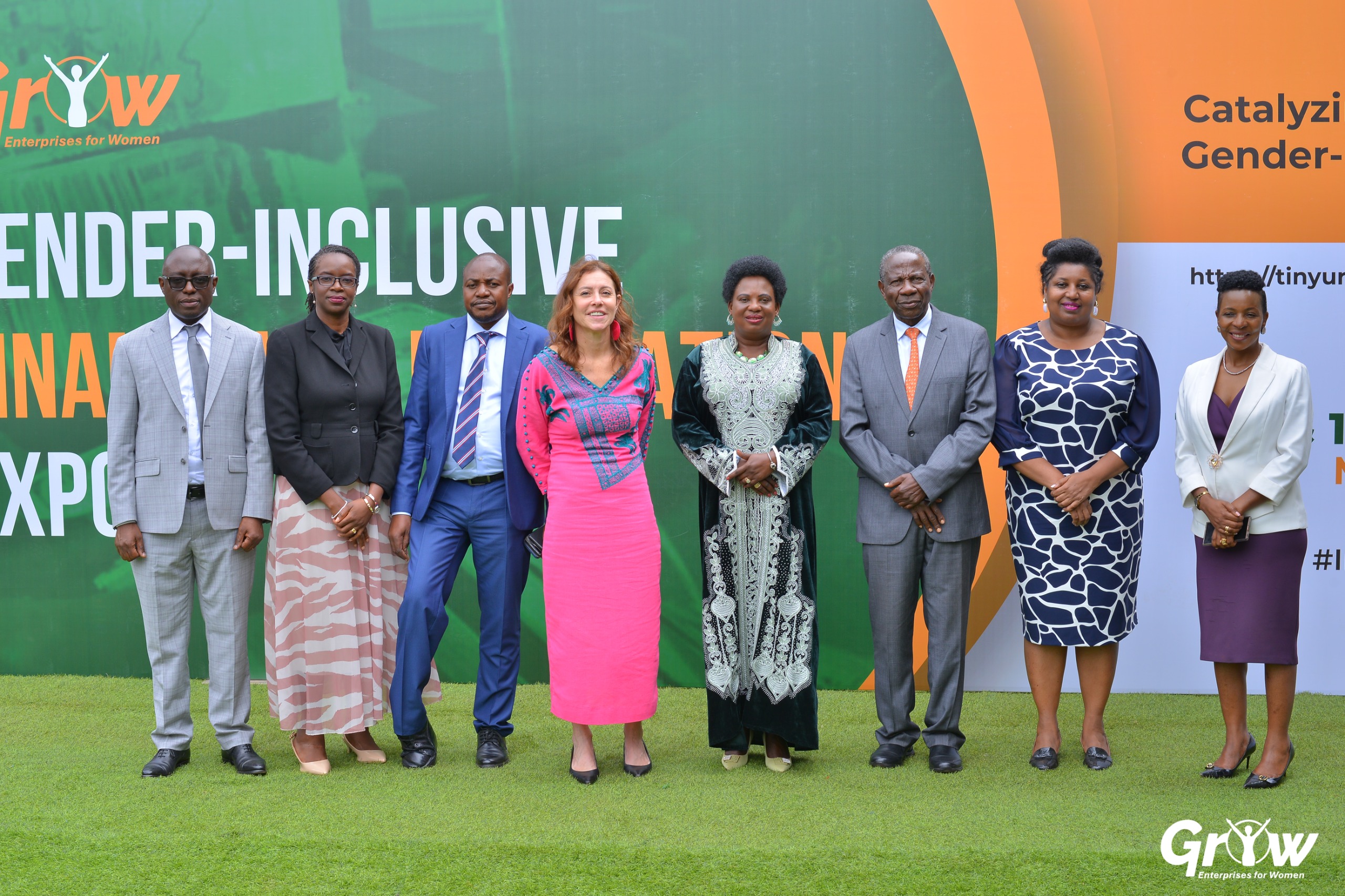As mentioned in part I and II of this publication, despite the growth record witnessed over the decade of policy reformation; macroeconomic stability and reasonably well functioning markets, however, there was a strong sense within the population and among policy prescribing elites, and particularly to President Yoweri Museveni himself, that economic growth had not translated into significant socioeconomic transformation, for millions of Ugandans, who remained disadvantaged, excluded, and marginalised. This disappointment is in turn prompted more and more ad hoc and innovative specific interventions (Selassie, 2008).
Increasingly, the stress was on how best NRM government could emulate successful government interventions, particularly in South East Asia (late industrialisers). On occasion, the more statist and expansionary model, had also been explored as a possible example for Uganda to follow.
On November 2, 1993, eight years of NRM leadership in Uganda, Yoweri Museveni made a passionate call on poverty reduction. He highlighted to the local daily, Newspaper, Chief Editor, Mr Wafula Ogutu – he needed to extend his rule beyond the transition arrangement on the context that the movement had been formulated and designed to address poverty in Uganda, ‘ I need to remain in power to combat poverty, banish poverty in rural areas, expand infrastructure particularly feeder roads in rural areas.
The presidential and parliamentary elections of 1996 provided a rich platform for the masses to express their concerns and frustrations about increasing poverty levels. As such, poverty became a main theme in the election campaigns, compelling Yoweri Museveni and his colleagues to search for bolder, novel policy approaches, that brought poverty reduction to the core of government policy. By late 1990s and early 2000s, poverty reduction became the central policy focus for all government budgets and realigned donor contributions towards national poverty reduction goals. Poverty Eradication Action Plan (PEAP) became the overarching policy framework for the next decade.
Poverty Eradication Action Plans (PEAP) (1997-2008)
The government’s long-term aim was to reduce poverty to less than 10% by 2017. PEAP sought to address the multidimensional − political, economic, and social − aspects of poverty through a better understanding of its causes and increased budgetary allocations to primary healthcare; rural feeder roads; education; water and sanitation; and the commercialisation of agriculture.
PEAP, therefore, in many ways guarded against ad hoc planning based around a cluster of few policy issues but also offered a broadened and focused scope in the country’s policy process towards poverty reduction in all aspects of government expenditure. The policy sought to promote multi-sectoral activities towards four principal goals: fast and sustainable economic growth and structural transformation; good governance and security; increasing the ability of the poor to raise their incomes; and increasing the quality of life for the poor.
Poverty reduction became the focus of all government departments as the government realigned donor contributions to national. Subsequently, PEAP was reinforced by the creation of the Poverty Action Fund (PAF), with funds received from the Highly Indebted Poor Countries Initiative (HIPC), reaffirming the government’s commitment to social and infrastructural development. Multilateral and bilateral donors supported the PAF, through Uganda Joint Assistance Strategy (UJAS) by raising substantial resources and strengthening the governments’ ability to meet the MDGs by 2015. UJAS highlighted a strategy through which the development partners were to support the implementation of PEAP.
Unfortunately, the process leading to formulation and adoption of PEAP assumed an incoherent and highly centralised process, with international development institutions (IFIs) and their imperialistic designs at the heart of the policy development process. World Bank and IMF represented the IFIs through their guiding policy tenet of Poverty Reduction Strategy Papers’ (PRSPs) source book. They published a sourcebook with prescribed guidelines highlighting the so-called empirical facts and best practices, to provide technical knowledge to developing countries like Uganda on how to formulate PRSPs. This is what Sabatier-Jenkins (1999) referred to as dominant advocacy coalition where one group has unprecedented power defining policy formulation and adoption because of either controlling resources such as technical expertise or financial clout.
At the national level, the Ministry of Finance Planning and Economic Development (MFPED) offered institutional framework within which this policy development process manifested.
In terms of the local coalitions involved in the process, bureaucracy dominated owing to its possession of skills and technical knowledge over politicians and the civil society organisations. Interestingly, the elected officials/politicians were content with excessive influence held by bureaucrats and donors over policy prescription, which sadly continuous up to date. Keen policy observers argued that it was inevitable given shared interests between the three groupings: politicians, bureaucrats, and donors.
In the Westminster model of governance and policy formulation, the policy making process was expected to assume a bottom-up approach whereby individual departments or policy communities make proposals, which are in turn consolidated by their parent ministries. To this end, independent departments are given necessary opportunity to identify particular needs or policy priorities which are then submitted to ministries without limitations placed on their individual demands, such as budget ceilings. The parent ministries, after consolidating submissions from their own different departments, make submissions to the MFPED, which in turn consolidates the inputs into a national policy plan that acts as the country’s blueprint of national policy framework. In this way, public policy development appears to be decentralised to lower-level government structures and, therefore, their participation is crucial if their inputs are to be reflected in the national policy plan. However, in practice the ideal bottom-up policy making exercise described above that emphasises a predominantly decentralised and an all-encompassing approach turned out differently in the formulation of PEAP.
Besides, the imbalance of power between elected officials, bureaucracy, and the donor institutions in the construction of PEAP, led to its effective failure to achieve Yoweri Museveni’s overall vision of poverty reduction and socioeconomic transformation in the second decade, generating varying explanations;
Firstly, PEAP emerged as a product of interests between politicians, technocrats as well as development agencies converged around poverty reduction agenda in reaction to the feelings that socioeconomic policy reforms of mid 1980s and early 1990s had failed to translate into real gains for millions of Ugandans who cyclically remained entrenched in everlasting poverty.
Secondly, Uganda was highly indebted and had to rely on foreign aid to support its budget, thus giving donors’ unrestricted power over policy theorisation and construction. Overall, PEAP process formulation was managed by MFPED under the guidance of donors, which, to a large extent, made PEAP to be seen as a policy document owned by few technocrats in MFPED and few donors, creating considerable challenges of linking PEAP to sector wide plans and local government plans (Canagarajah & van Diesen, 2011). As a result of the monopoly over policy theorisation and construction, successful translation of PEAP to real positive outcomes was hugely hampered!
Thirdly, politicians were generally not equipped with policy formulation knowledge and, as a result, their involvement in policy development process was limited to peripheral issues (eg mobilisation) and they had little influence over the PEAP formulation process as they had to rely on bureaucracy. This meant that bureaucrats held a disproportionately large role over elected officials in the PEAP formulation policy process, with significant challenges in the implementation.
Yoweri Museveni’s growing dissatisfaction and frustration with PEAP’s failure to consolidate poverty reduction efforts, together with slow economic growth around the mid-2000s and several global events, called for a shift towards structural transformation through greater diversification of the economy. This phase will be revisited in the next series.
The Writer is Lecturer at Australian Catholic University, Sydney, and Box Hill Institute, Lilydale Lakeside Campus, Melbourne, A visiting Fellow, University of Konstanz Germany and a recent post-doctoral fellow of poverty, policy, and aid, and obtained a PhD in poverty reduction.
Constructive feedback can be sent to Emails; Samuel.ariong@acu.edu.au or Samuel.ariong@boxhill.edu.au
Do you have a story in your community or an opinion to share with us: Email us at editorial@watchdoguganda.com













